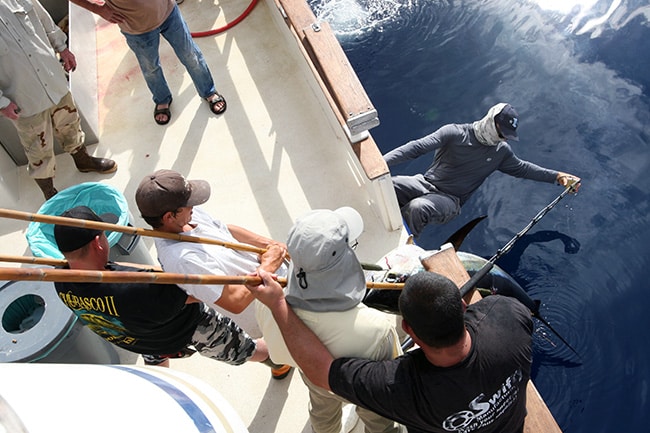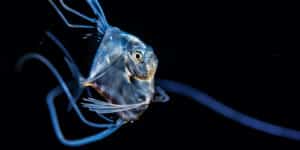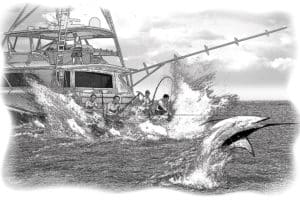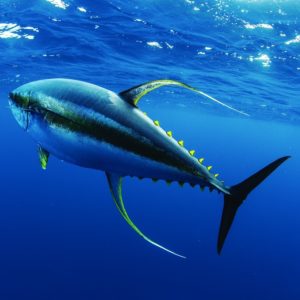
day 7
One 211-pound yellowfin tuna saved the day to an otherwise slow afternoon at the banks. If you check out a topography map of the Baja Mexico Coast, along the Pacific Ocean, it’s hard to miss the banks, ridges and drop-offs that start about 25 miles offshore. That’s big yellowfin tuna country all the way into February.
Average depths that we fished ranged from 55 to 65 fathoms. Hopscotching north along the Baja Peninsula, we trolled and anchored whenever the conditions were favorable.
At the first bank we started, there really wasn’t much happening. Capt. Ekstrom explains it this way: The yellowfin tuna come up onto the shallower banks during certain times of the day. It’s hard to predict when the trophy tuna will show themselves on the sonar — that’s why it’s vitally important to always “soak” mackerel baits.
Angler Gunner Kruse “hung” his tuna just minutes after Ekstrom called out over the speaker that some “cows were underneath the boat deep.” The fish swam erratically around the boat, twisting the main line into the anchor a number of times. You can bet Kruse thanked mates Blake and Jimmy for the tangles they prevented.
The tuna fought far from the boat, straight up and down, and even circled the boat a number of times. Finally, the tuna battled fervently just below the top thermocline, trying to stay in that cooler mid level water. But Kruse won the battle, and Eckstrom was there to photograph the fish along with the three gaff men.
The photo included with this blog post is a picture of Capt. Ekstrom hanging off the side of the boat to take a picture of the 200-plus-pound tuna.
Moving between banks, we were always on the lookout for schools of dolphin or kelp paddies. We jumped between banks often because there was no current and little signs of life, about the worst conditions you can ask for, says Ekstrom.
The first school of porpoise that we ran into had under-10-pound yellwofin tuna mixed in, so we didn’t spend much time with them. At another point, Ekstrom spotted a school of porpoise about 8 miles ahead of the boat with his binocs. When we reached the birds and dolphins, it was disappointing to see no tuna with them.
Our constant companion, the sea lion, was always there to chomp pieces of fish in our chum line. We named him Bobo. That sea dog seemed to follow our boat and was ready for fish-freebies whenever we anchored. We also met a local Mexican fishing crew, setting lines for sharks from their panga. We passed them some of our chunk baits, along with some muffins and potato pancakes for lunch. They left happy!
One event that happened after last night’s blog post was a flurry of dorado fishing action. At about 9 p.m., with half the boat sleeping, three anglers started catching dorado as they schooled underneath the boat. There was a call out over the radio to grab a rod and get fishing, but the school left just as soon as it came. I awoke to fish flopping at the deck, but was about 2 minutes late to the action. By the time I had my bait out in the water, the fish had moved on.







